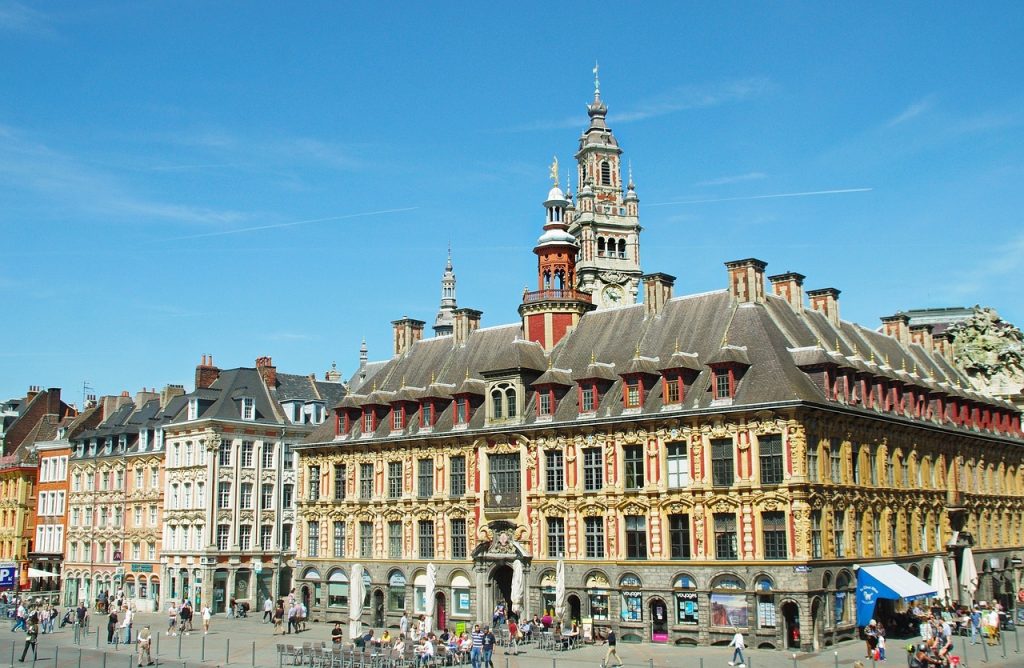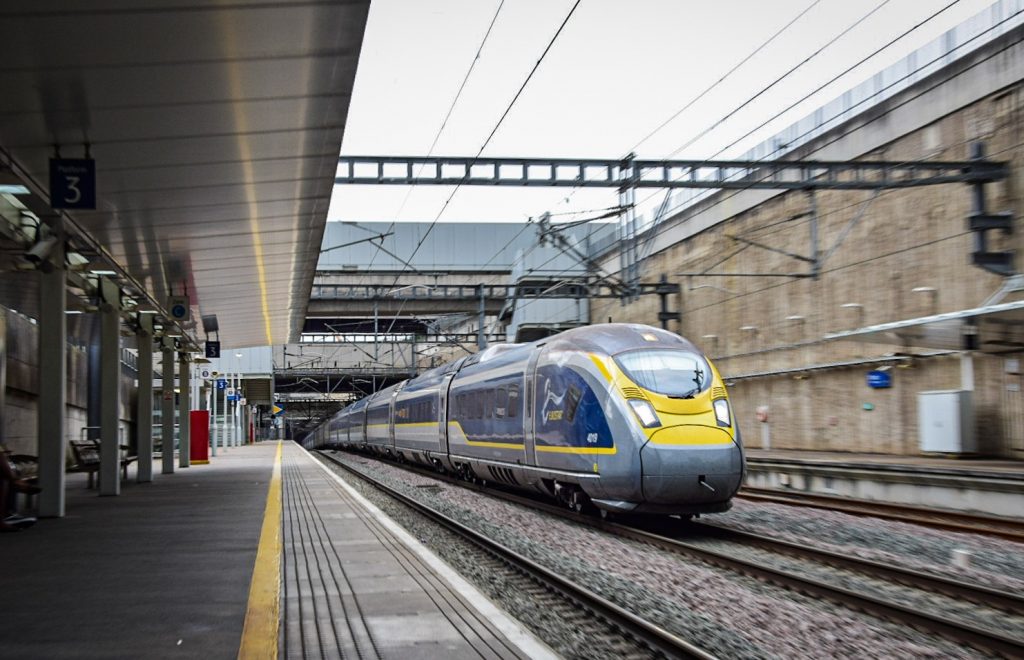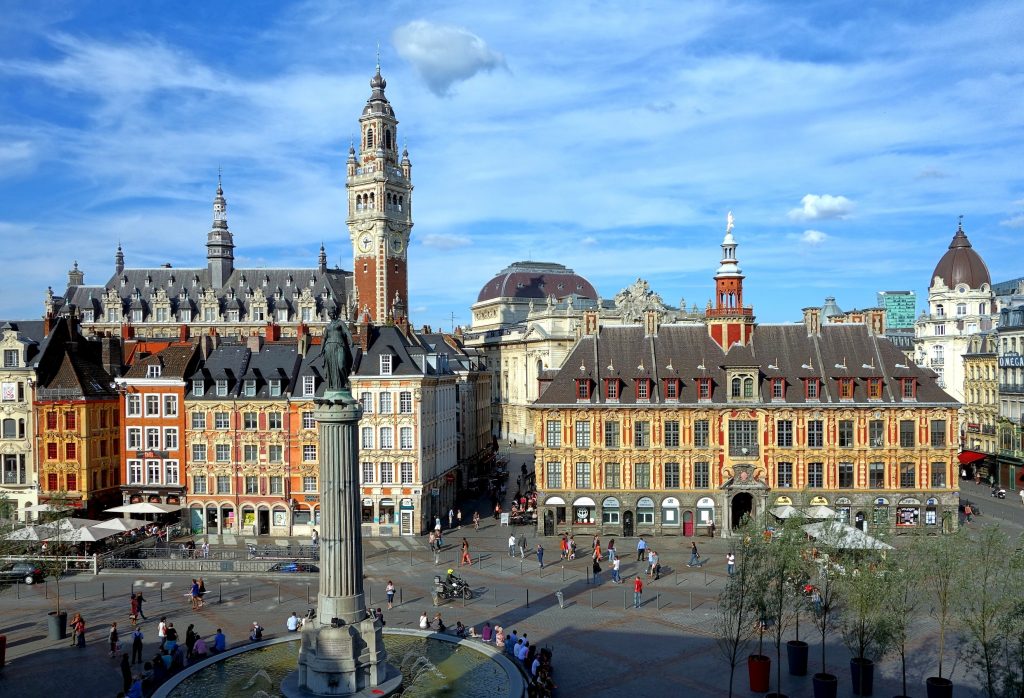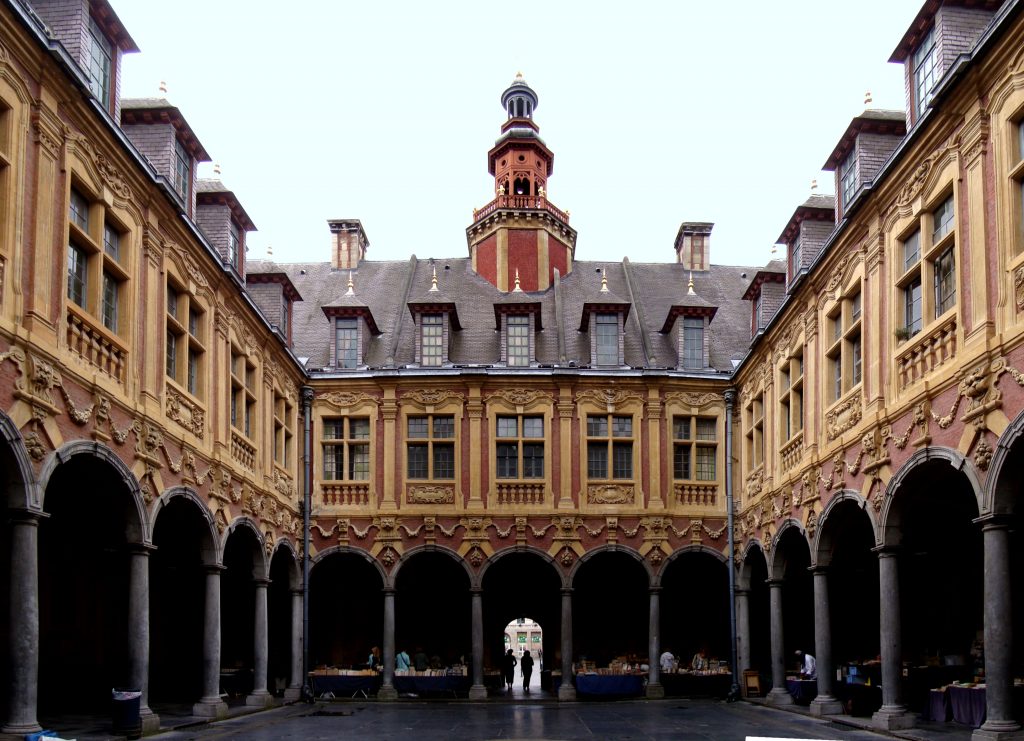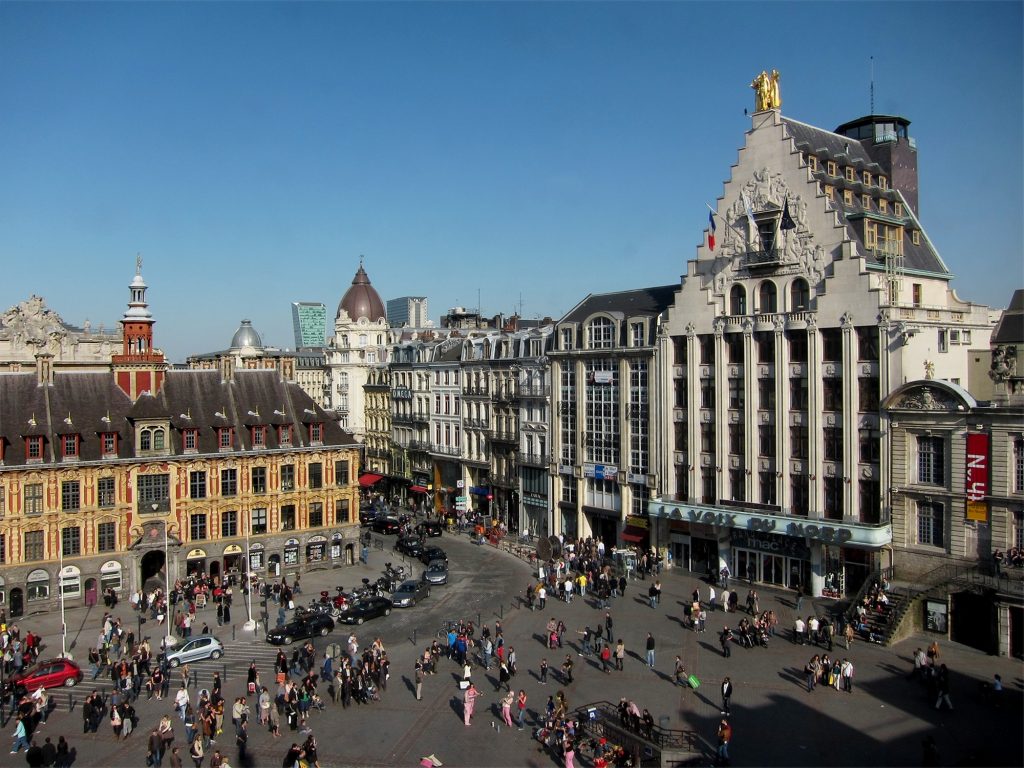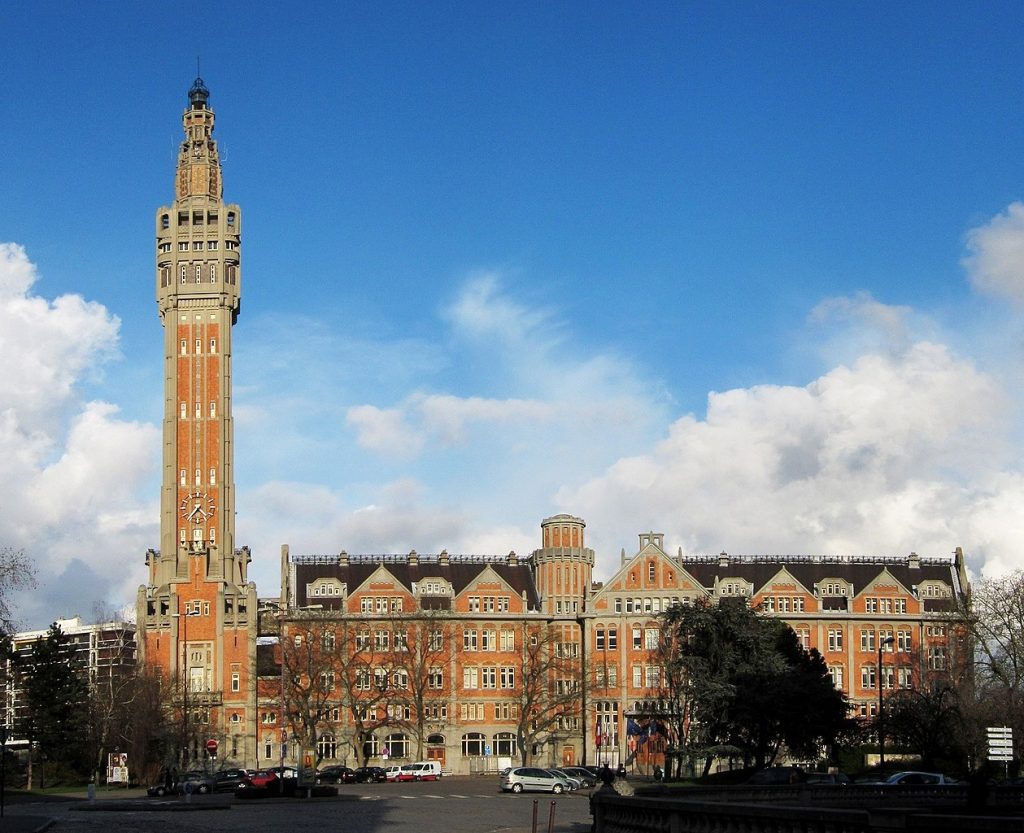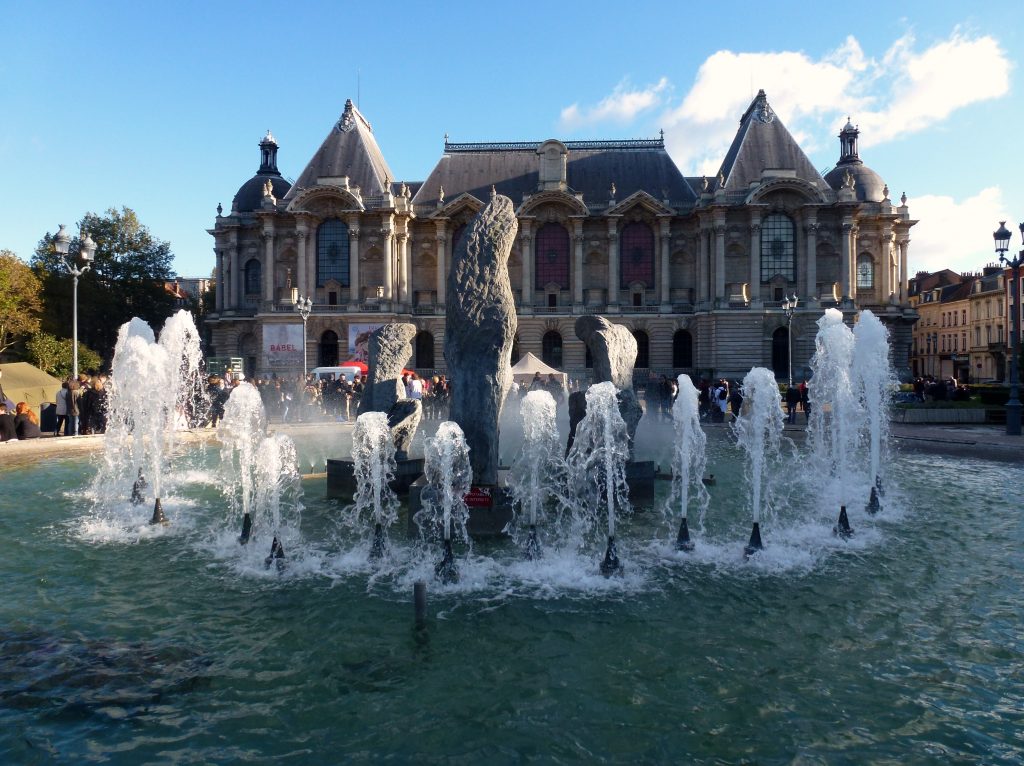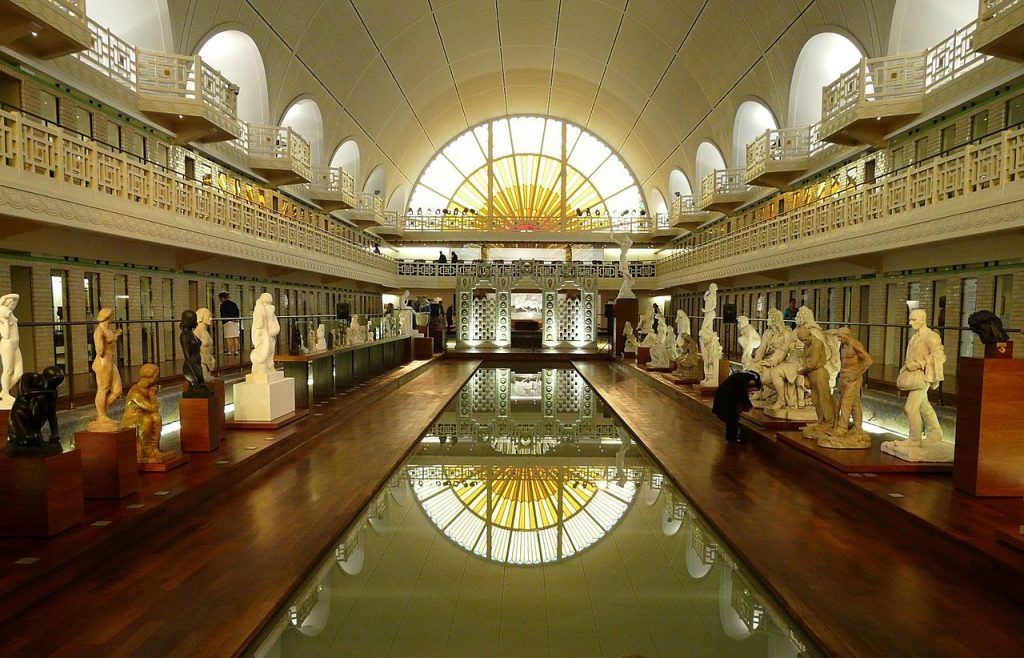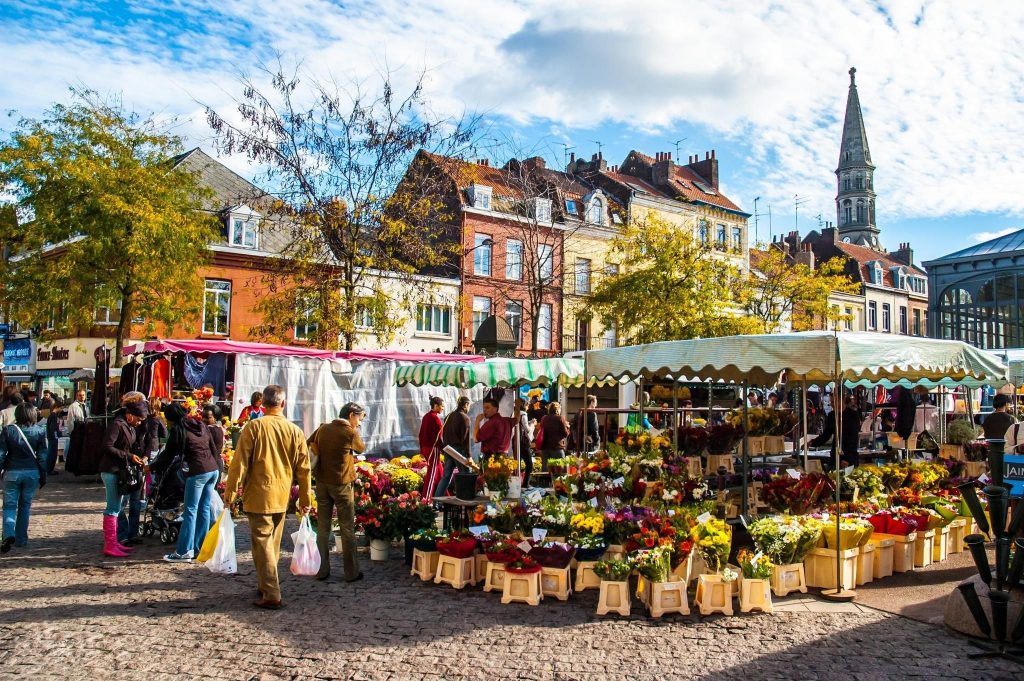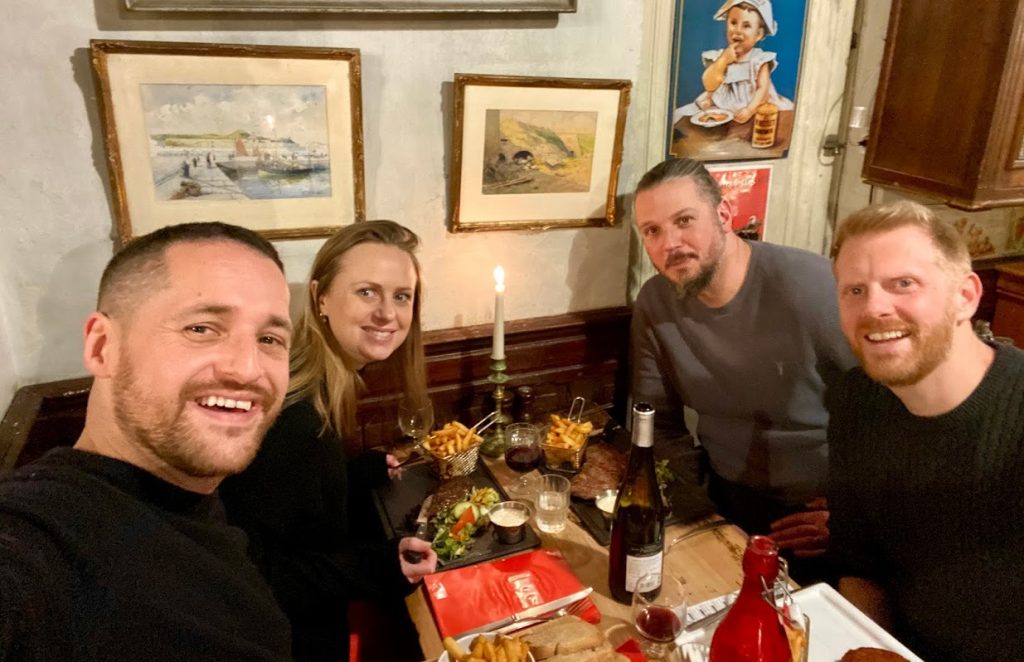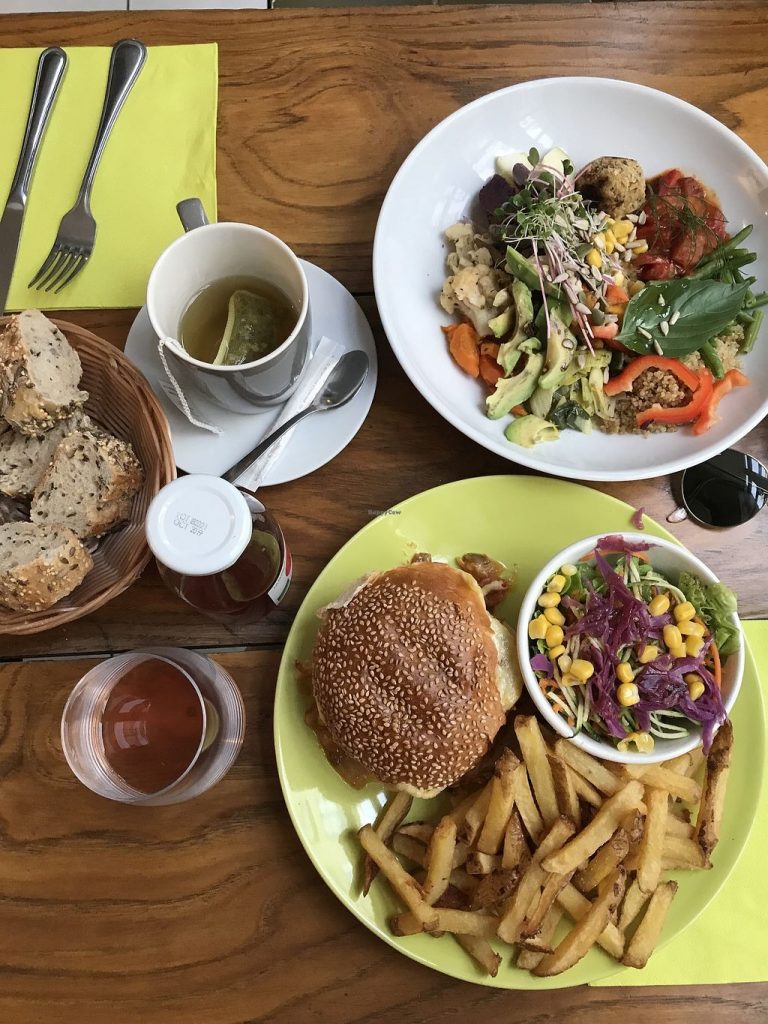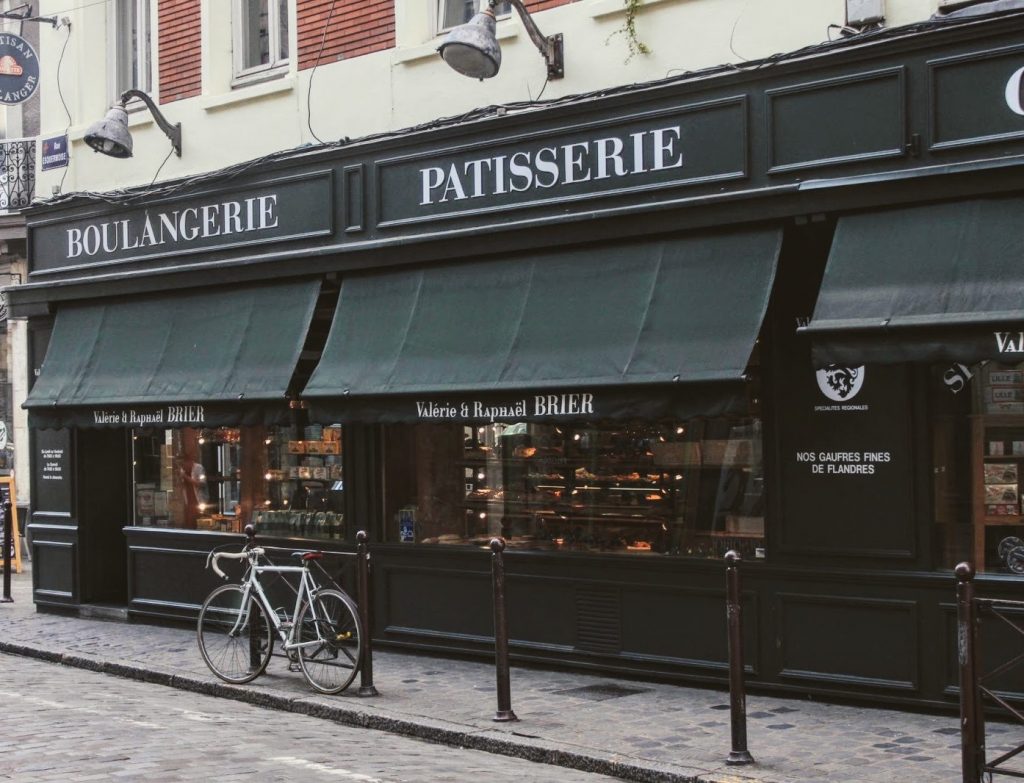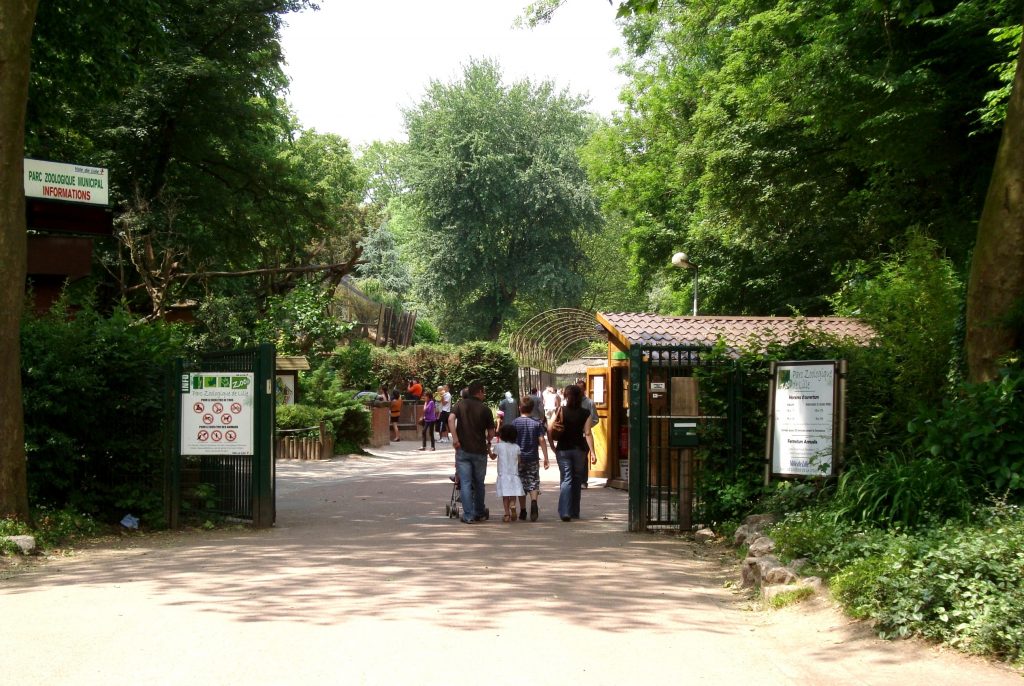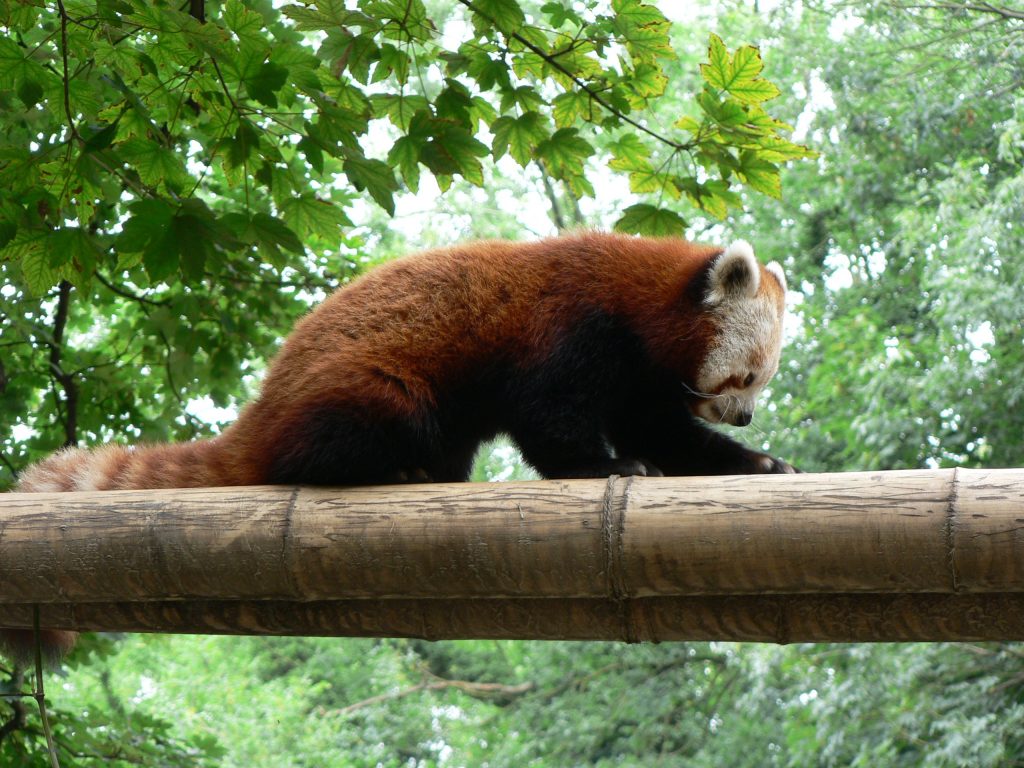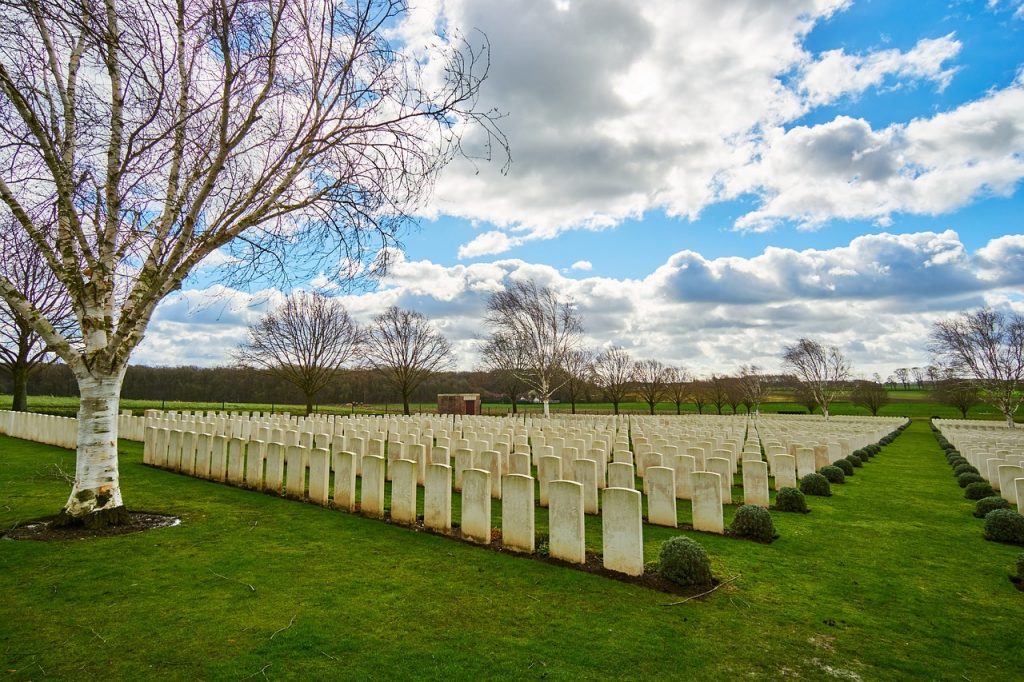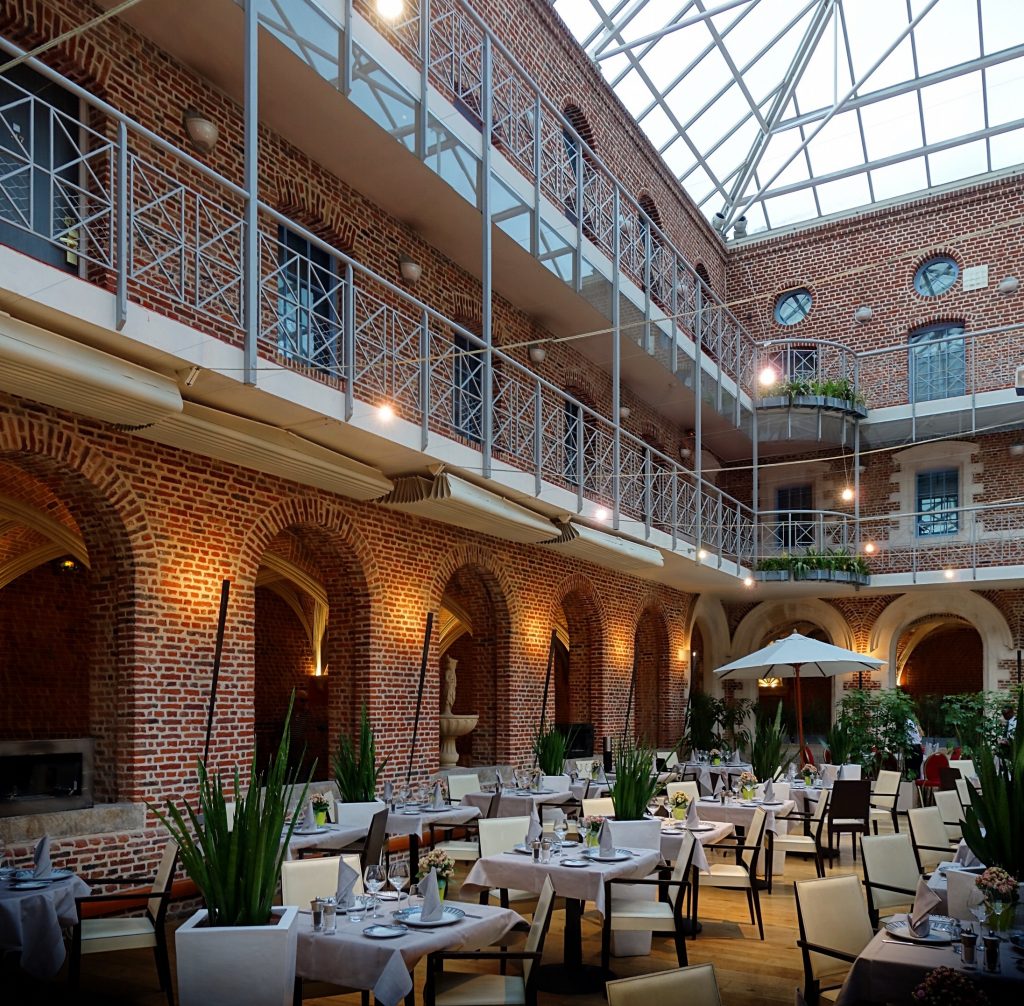Located in France’s northern Hauts-de-France region, close to the Belgian border, Lille is a surprisingly short journey from the UK.
It’s a great destination for a quick and hassle-free mini-break, or as a way of getting those travel juices flowing again after lockdown.
Getting there
There are indirect flights with various airlines but it’s much better news if you live close enough to a Eurostar station: at just an hour and 26 minutes from London, the journey to Lille is direct and unbelievably fast.

Waiting for the Eurostar at Ebbsfleet Station
For me it was better still – the Eurostar stops at Ebbsfleet, just a 20 minute drive away, and cuts another 15 minutes off the journey time to the French city.
The pleasures of Eurostar
The ease of travelling by Eurostar should never be underrated – compared with getting to an airport, fighting through check-in and bag drop, and undressing at security, it feels like no hassle at all. Sure, you do still have to do the check in and security thing but it’s a far less stressful process with Eurostar.
Gliding into Lille Europe station, totally relaxed with luggage already in hand, the fun can begin the minute you step foot off the train. It’s a pleasure that flying just can’t replicate.
…so, in just a bit more time than it takes to get the slow train to London, I was sitting in a café enjoying my first Lille lunch.
Eurostar offer some tempting deals throughout the year so it’s definitely worth bookmarking their website to see if you can bag yourself a bargain in the process.
Isn’t Lille a bit boring and industrial?
Nope. Although you could be forgiven for thinking that.
It doesn’t have the elegant culture of Paris, the balmy beauty of the South-West, or the glamour of the Côte d’Azur. But France’s fourth-largest city (by urban area) does have enough unique charm of its own. And that’s the lovely thing about visiting France; with such diversity between regions and cities, there’s usually always good times to be had.
True, Lille thrived during the industrial revolution and it is regarded as the industrial centre of Northern France. But it’s also the third-biggest French university town, resulting in a young population and modern student vibe. The knock-on effect has brought about somewhat of a transformation – particularly since the economic crisis in 2008. And it was even named as the World Design Capital for 2020 – the first ever French city to hold the honour.
Lille also has a very pretty old town containing a mix of French and Flemish architecture – and manages to retain enough Gallic charm for people who love to soak up the culture.
But what is there to do?
Sure, there’s not a huge amount of things to do and you’re unlikely to want to spend a week, but there’s more than enough to keep visitors occupied for a couple of days.
Lille has lots of museums, stylish shopping, a large number of fabulous eateries and cuisines, plus a relatively thriving nightlife – thanks, in part, to the student population. There’s also a pretty big Christmas market (Marché de Noël) with funfair during the festive period, which Lonely Planet describes as “one of France’s most enchanting Christmas markets” with “a magical backdrop.”

Christmas market and funfair / Credit: frankieleon
Best thing to see
Old Town – a picturesque place to wander around, with cobblestone streets and a unique French/Flemish twist reflected in the architecture and decor. You’ll constantly be looking up in awe at the baroque 17th and 18th century façades.
Watch out for
Vieille Bourse – the old stock exchange – an ornately decorated Flemish showpiece of a building with a daily flower and book market beneath the arcades.
Grand Place – the city’s main square and meeting place, with wonderful old gabled buildings.
Hôtel de Ville – nearly 100 years old, the city hall is topped by a 104 metre-high belfry and listed as a Unesco World Heritage Site. Climbing up for a panoramic view of the town will cost around £6.50 for adults and £5 for a child.
Best museum
Palais des Beaux-Arts – Lille’s world-famous Fine Arts Museum – contains the second largest collection in France after the Louvre in Paris. The place is enormous and displays countless important works from the 15th to the 20th centuries. You could easily spend half a day here. Costs around £6.50 for adults / £3.60 for children.
La Piscine Musée d’Art et d’Industrie – a wonderful art deco indoor swimming pool around 12km northeast of Lille-Europe station. Nearly 100 years old, it closed to the public in the 1980s and has since reopened as a fine arts and applied arts museum. The pool remains filled and casts impressively elegant reflections of sculptures into the water. The museum notably showcases a large number of exhibits from Lille’s industrial past.
Best market
Marché de Wazemmes – one of Northern France’s best-loved and biggest outdoor markets – held on Tuesdays, Thursdays and Sunday mornings in Wazemmes. Vibrant and colourful, it sits alongside many shops, restaurants and bakeries catering to the area’s North African residents. A must-visit feast for the senses! There’s also a covered market 8am to 8pm, Tues-Sat and 3pm Sun.
Best food
Lille has so many great eateries inspired by its French and Flemish roots that it’s really hard to choose any as the “best”. But I’d recommend trying out an estimanet (traditional Flemish restaurant with plain wooden tables and antiques adorning the walls).
I ate in Estimanet ‘T Rijsel and mainly chose it because it was packed with locals and seemed charmingly authentic. Plus, I always feel there’s an added sense of adventure in going somewhere that doesn’t have an “alternative English menu” – forcing me to improve my broken French and sometimes adding a little surprise to what I might’ve ordered. This place has a simple rustic feel, but is definitely worth squeezing yourself in for a pleasant, lively evening.
Best vegetarian
I try to go vegetarian whenever possible, and genuinely find veggie/vegan restaurants are the most exciting and cutting edge wherever I go in the world. They constantly seem to adapt their menus and generally try that bit harder to choose and present their food.
In Lille, aside from the annoyingly pretentious Brits in the corner, I enjoyed De Rode Koe – it felt like someone’s tiny front room and the veggie burger I had was fresh, tasty and plentiful.
Best boulangerie
Boulangerie Brier – even though the prices were pretty high, watching the owner continually bringing out tray after tray of perfectly baked pastries and breads and lovingly filling up and rearranging his window display, I knew it was worth it. Sitting in their tea room enjoying a big tray of breakfast croissants, jams and cake felt like an indulgent treat.
Best bar
I tried out a few bars and actually liked them all. The modern, brasserie-style bare-brick, calming atmosphere of L’Imaginaire was a great place to catch up with friends and shelter from the rain outside for a bit. They also have a nice seating area out the back for warmer days.
Le Porthos was another place where I went in to shelter from the late evening rain – yes, it can rain a lot in Lille in winter! – but was very glad I did. It’s a weirdly eclectic, yet somehow shabby-cool unassuming place, perfect to sit in the window with a drink and watch the (wet) world pass run by.

Strange decor
Best free stuff
Wandering Lille’s pretty old town is a nice way to spend half a day – and I’d suggest getting a guidebook and following a couple of routes to learn about everywhere as you go. I’ve taken to doing at least one of the routes suggested in each Lonely Planet (or other travel guide) book for every city I visit – and it feels like I’m doing places a bit more justice than always wandering aimlessly (although that can also be fun!)
Lille Cathedral – also known as Notre Dame de la Treille – is impressive and worth a visit. It’s a Roman Catholic church and a good example of Gothic Revival architecture. Construction began in 1854 and was finally fully completed in 1999!
Lille Zoo (or Parc Zoologique Lille) is not strictly free (unless you’re a resident of Lille) but it’s so affordable you won’t mind. It’s one of the most visited zoos in France. Entry costs about £3.60 per adult and £1.80 for a child and helps towards its maintenance. It’s compact, with only 70 species and 450 animals, but the enclosures are large and it’s well-maintained – and Lille Zoo takes part in international conservation programmes for endangered species.
Other stuff and WW1
Being so close to the Belgian border, many visitors stop over in Lille to visit the now hauntingly beautiful places which formed the Western Front. Within easy reach of the city, the World War One memorials and cemeteries mark the front lines, and there are battlefield tours to Flanders, Ypres and the Somme.
Lille is well situated for road and train connections to other cities in Belgium and France. It’s only 48 minutes from Brussels on the train (1hr 40 by car), or 1hr 20 from Ghent (1hr 6 by car) and 1hr 40 from Bruges (1hr 6 in the car). And it’s just over an hour by train to Paris.
Where I stayed
The trip was primarily a working one, so I enjoyed a pleasant first night’s stay at Hotel Couvent des Minimes Lille, a 17th Century converted convent – a few minutes’ walk from the city centre. The hotel has an elegant, bare-brick interior with rooms facing an interior courtyard with bar and restaurant.
And then, because of my love for Airbnb’ing, afterwards I stayed a couple of nights in the very centre of Lille’s old town – in a tiny apartment with an old-fashioned schoolroom theme and a mezzanine bed in the eaves, reached by climbing some ingenious step shelving.

Small but perfectly formed living room


